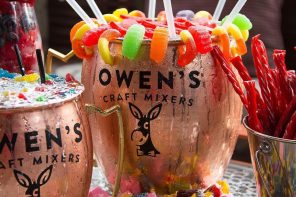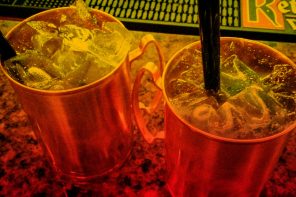Prohibition left 1930s America high, dry, and feeling thirsty. No longer forced to frequent speakeasies to wet their whistles, the American public was ready for something delicious to stimulate their taste buds after nearly a decade and half of drinking rotgut gin. As luck would have it, they didn’t have to wait long. The dawn of the tiki bar was just around the corner, thanks to Ernest Raymond Beaumont Gantt, who would become better known as Don the Beachcomber.
Gantt knew a thing or two about booze. A world traveler turned Prohibition bootlegger, he packed in the rum-running and became a rum-slinger, opening Don’s Beachcomber, the original tiki bar and restaurant soon after the 18th Amendment was repealed. Gantt was the architect of the Polynesian-inspired movement that dominated mid-century America. Potent libations like the Zombie, Navy Grog, and many others were all Gantt’s inventions and intensely popular to boot. His small bar quickly became a Hollywood hotspot that was the place to be for the major stars of the day. Gantt himself became so synonymous with his franchise that he legally changed his name to Donn Beach. Naturally, it didn’t take long for a competitor to emerge. Enter Victor Bergeron aka Trader Vic.
With an idea in mind and a loan in hand, the one-legged Bergeron opened up Hinky Dink’s in Oakland, CA about a year or so after Don the Beachcomber opened its doors. Like Gantt, Bergeron’s restaurant and bar sky-rocketed in popularity but it wasn’t until he revamped it as tiki haven and redubbed it Trader Vic’s that he firmly established himself as one of the patriarchs of tiki. With time, both the Trader and the Beachcomber expanded their empires across the country then to foreign shores. Copycats sprung up ready to serve up exotic cocktails concocted from tropical ingredients like rum, coconut, pineapple, and falernum, all elaborately garnished. But no one was as prolific as Gantt and Bergeron when it came to inventing new recipes. Which brings us to the epitome of tiki cocktails, the Mai Tai. Both men claimed to have created it although to date the mystery remains unsolved. We do know that the name comes from the Tahitian “maita’i” for “good” and was so named by Bergeron.
Tiki continued to thrive through the ’60s and early ’70s but as the decade wound down, so did the country’s appetite for pseudo-South Pacific fare. Tiki became tacky so America ditched the kitsch. Instead, the tropical drinks, pu pu platters, and South Seas ephemera were replaced with the best the 1980s had to offer. Provocatively named cocktails like the Fuzzy Navel, Slippery Nipple, and Sex on the Beach were the poster children of ’80s drinking culture, the so-called Dark Ages of American Mixology.
From culture to crass, craft left the cocktail world, leaving bar patrons with ultra-sweet, mediocre drinking options. A well-timed renaissance at the turn of century spared us from further embarrassment. With this renewed interest in making proper cocktails, it was only a matter of time before the tiki drink was resurrected from its grave. Modern day bartenders are now revisiting the world of tropical concoctions and the spirituous creations of the godfathers of tiki are now found in watering holes the world over. Once again, we can enjoy a taste of paradise in the form of Scorpions, Rangoon Rubys, Zombies and of course, the Mai Tai – cocktail umbrella included.








